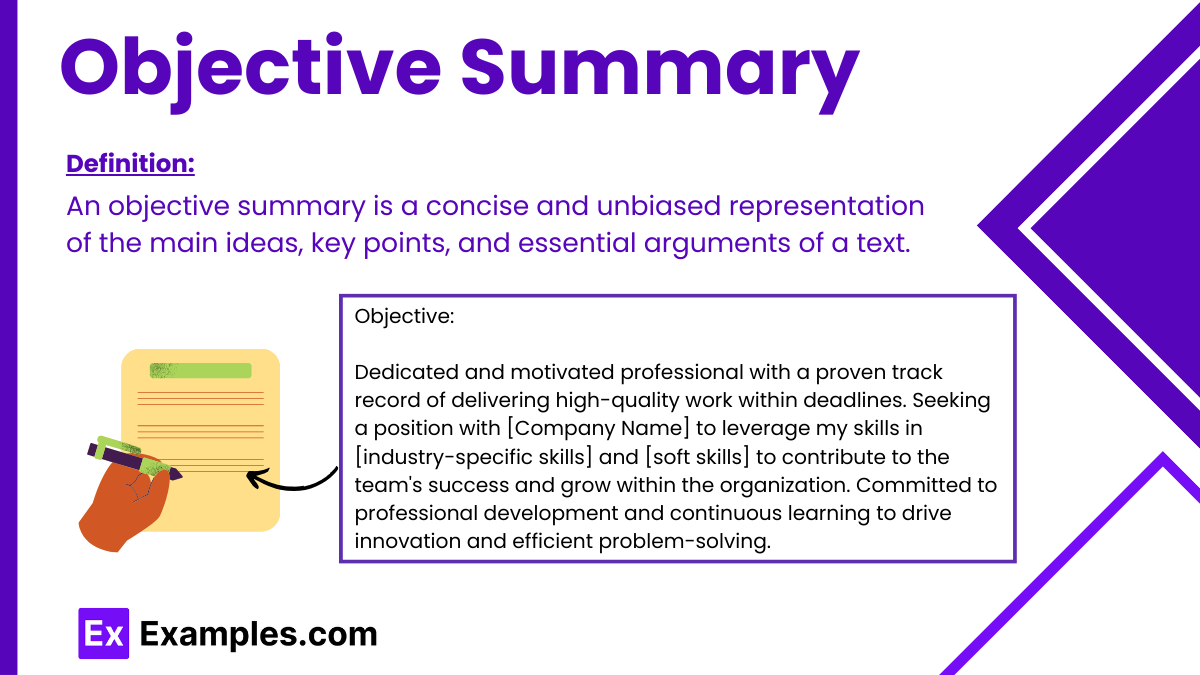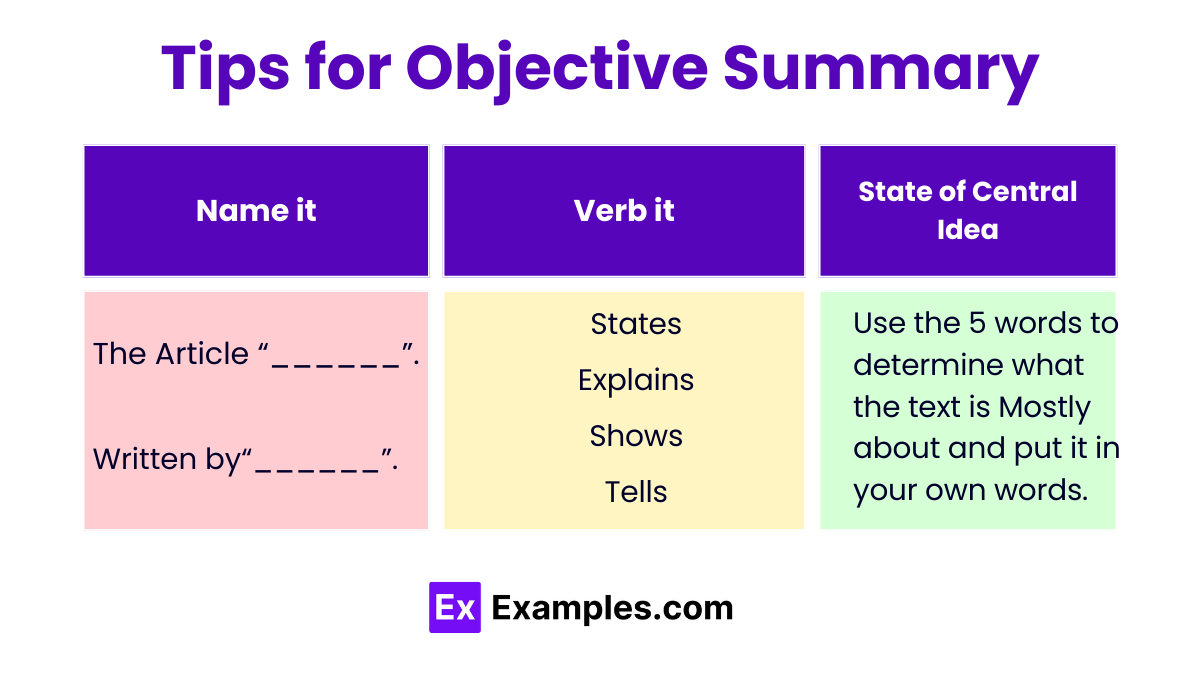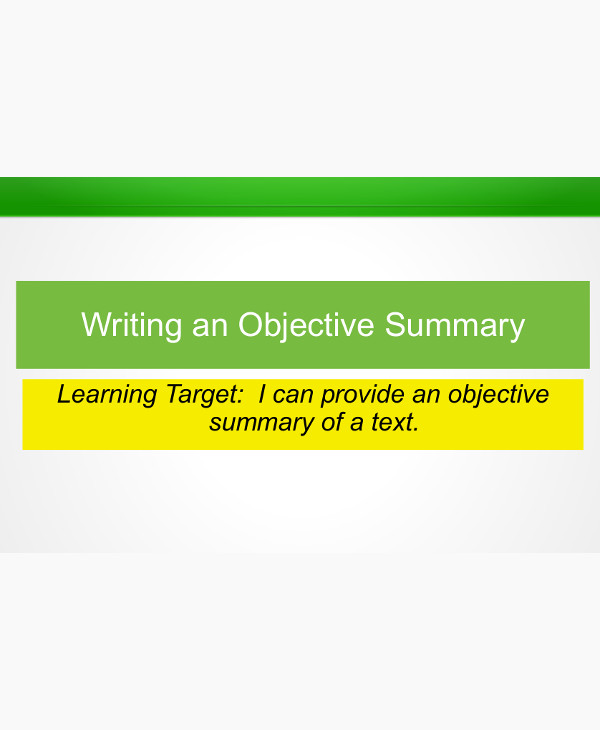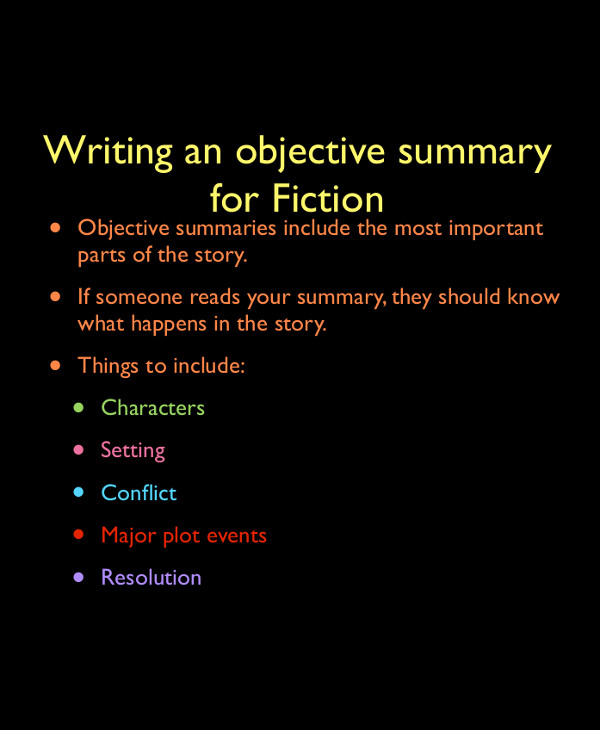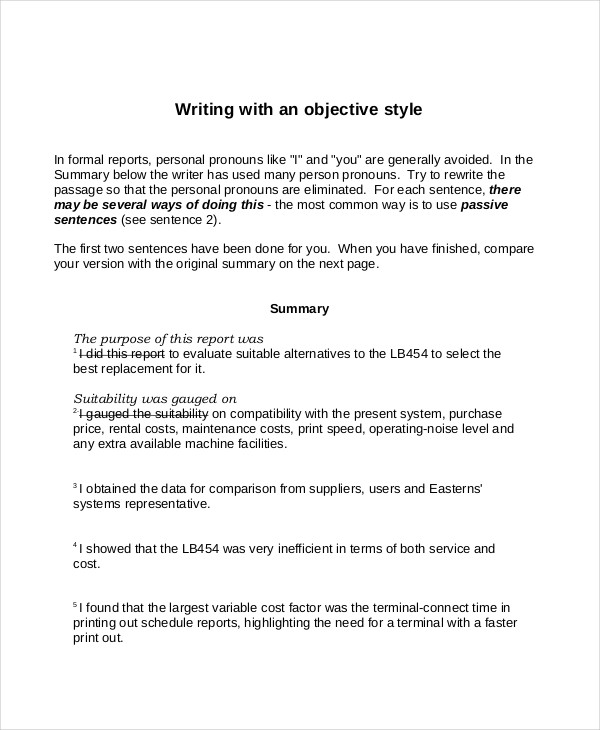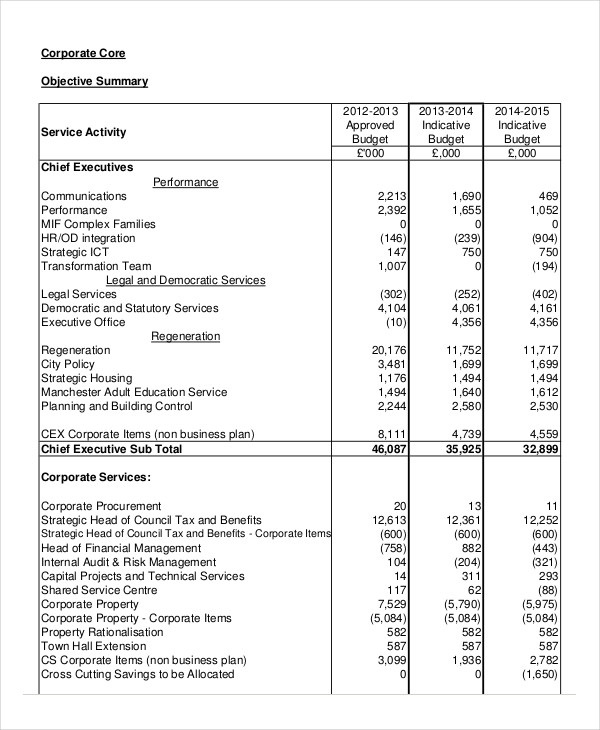Objective Summary Examples to Download
All specific and general resumes have elements that HR or the hiring manager will quickly look at to determine if the applicant will be endorsed to the next steps in the employment process. One of the elements the HR or hiring managers will focus on is the objective summary in one’s resume.
An objective summary is a concise and unbiased representation of the main ideas, key points, and essential arguments of a text. It strips away personal opinions, interpretations, and extraneous details, focusing solely on the factual content. The goal is to provide readers with a clear understanding of the original material’s essence without introducing subjective judgment or analysis, allowing them to grasp the primary information quickly and efficiently. This type of summary is commonly used in academic writing, professional reports, and information analysis to present information in a straightforward, accessible manner
- Read Thoroughly: Begin by reading the entire text carefully to understand its main ideas, arguments, and structure. Take notes on key points and supporting details.
- Identify Main Ideas: Determine the central theme or thesis of the text. Identify the primary arguments or points that the author uses to support this theme.
- Use Neutral Language: Write using neutral, unbiased language. Avoid any evaluative or subjective words that suggest personal opinions or feelings about the text.
- Be Concise: Summarize the main points and essential supporting details in a brief manner. An objective summary should be significantly shorter than the original text.
- Avoid Personal Commentary: Do not include your interpretations, analyses, or reactions to the text. The summary should reflect the author’s ideas and perspectives, not yours.
- Use Direct References: When mentioning specific arguments or points, refer directly to what the author says without paraphrasing too liberally. Use quotations for critical phrases, if necessary.
- Check for Accuracy: Review your summary to ensure it accurately represents the text’s main ideas and key points without adding or omitting important information.
- Revise for Clarity: Edit your summary for clarity, coherence, and readability. Ensure that it flows logically and can be understood by someone who hasn’t read the original text.
The Importance of an Objective Summary
- Efficiency: It allows readers to quickly grasp the essence of a document without reading it in its entirety, saving time and effort.
- Clarity: By distilling complex information into its core elements, an objective summary clarifies the main themes and arguments of the text.
- Neutral Perspective: Offering an unbiased overview, it helps readers understand the text without the influence of personal opinions or interpretations.
- Resource for Study: Students and researchers can use objective summaries as study aids to review key concepts and arguments from their readings.
- Foundation for Discussion: It provides a neutral basis for discussion, analysis, or further research, ensuring all participants have a common understanding of the text.
- Aid in Decision Making: For professionals, concise summaries of reports, articles, or proposals can aid in quick decision-making by presenting essential information without extraneous details.
- Accessibility: Makes complex or lengthy texts more accessible to a broader audience, including those who may not have the time or expertise to understand the original material in depth.
- Content Overview: Offers an overview of content for indexing, cataloging, or reviewing purposes, helping in the organization and retrieval of information.
Objective Summary Outline Example 1
Objective Summary Outline Example 2
Objective Style Summary Example
Corporate Objective Summary Example
Resume Objective Summary Example
What Is an Objective Summary?
The objective summary acts as a short succinct summary of one’s resume profile, which will grab the attention of the HR or Hiring manager to check the content and overall context of your resume. The objective summary will also contain tidbits of your work experience and resume skills you have placed in your resume.
How to Write an Objective Summary
A well-written objective summary will not only vouch for your credibility but will also set the tone of your resume. To write a well-written objective summary, be sure to make it succinct and straight to the point.
Step 1: Use an Objective Summary Outline
Begin by obtaining and using an objective summary outline or outline format as your main reference point. The objective summary outline will help provide structure and will help pace out the whole objective summary.
Step 2: Write the Objective Summary
Write the objective summary which should have the length of a single paragraph. Be sure to keep the tone formal and limit the amount of flowery language in the objective summary
Step 3: Have Someone Proofread the Objective Summary
When you have finished writing the objective summary, you must have someone you trust to proofread the contents of your objective summary. This will eliminate any room for bias, which can interfere with the quality of your objective summary
Step 4: Edit the Objective Summary
You must edit the objective summary to minimize any grammatical errors and issues that will be present in the objective summary. Not only that, but you should also follow or include the proofreader’s advice in the editing process
FAQs
How long should an objective summary be?
The objective summary should span from three to five sentences. This is because the objective summary is a short succinct group of statements, which should not take too much time from the HR or hiring manager. This is to ensure that the time the HR or Hiring manager will spend on your resume will be short and efficient.
Objective summary vs. objective statement, what is the difference between an objective summary and an objective statement?
An objective summary is a short group of statements that spans three to five sentences in one’s resume, which should relay specific information and provide a theme about a person’s personality and performance. An objective statement is a type of statement one will create and set for themselves, which will act as a way to motivate the person throughout their life.
Should I add my career goals to the objective summary?
Yes, the career goals will indicate to the HR and the hiring manager the trajectory you want to take in your career or profession. Having your career goals in your objective summary will improve your chances of being endorsed into the next step of the recruitment process.
An objective summary is a group of statements that will outline and indicate what the said person can offer to the company if the HR or hiring manager will endorse them. A well-made objective summary will improve one’s chances of moving forward in the recruitment or employment process.
How many words should an objective summary be?
An objective summary should be significantly shorter than the original text, typically ranging from 100 to 150 words, depending on the length and complexity of the source material. The goal is to concisely capture the main ideas and key points.
What does an objective summary include quizlet?
An objective summary on Quizlet would include the central ideas, main arguments, and essential details of a text, presented in a neutral and concise manner, devoid of personal opinion or interpretation.
Is an objective summary a paragraph?
Yes, an objective summary is often a single, cohesive paragraph that concisely outlines the main points and arguments of a text, although it can occasionally extend to two paragraphs for longer texts.
What is objective example?
An objective example refers to a fact or piece of information that is based on observable phenomena and uninfluenced by emotions or personal biases. For instance, stating the temperature is 75 degrees Fahrenheit is an objective example.
What is the correct example of objective?
A correct example of an objective could be a specific, measurable goal, like “Increase monthly sales by 10% within the next quarter,” which is clear, quantifiable, and time-bound.
What is the three part method of objective writing?
The three-part method of objective writing involves stating a fact, providing evidence or examples to support that fact, and explaining the significance or implication of the fact, all while maintaining neutrality and avoiding personal bias.
How do you write a three part objective?
To write a three-part objective, start by clearly stating your goal or what you aim to achieve. Next, specify the conditions or context under which the goal will be accomplished. Finally, set the criteria for success or how the achievement of the goal will be measured.


